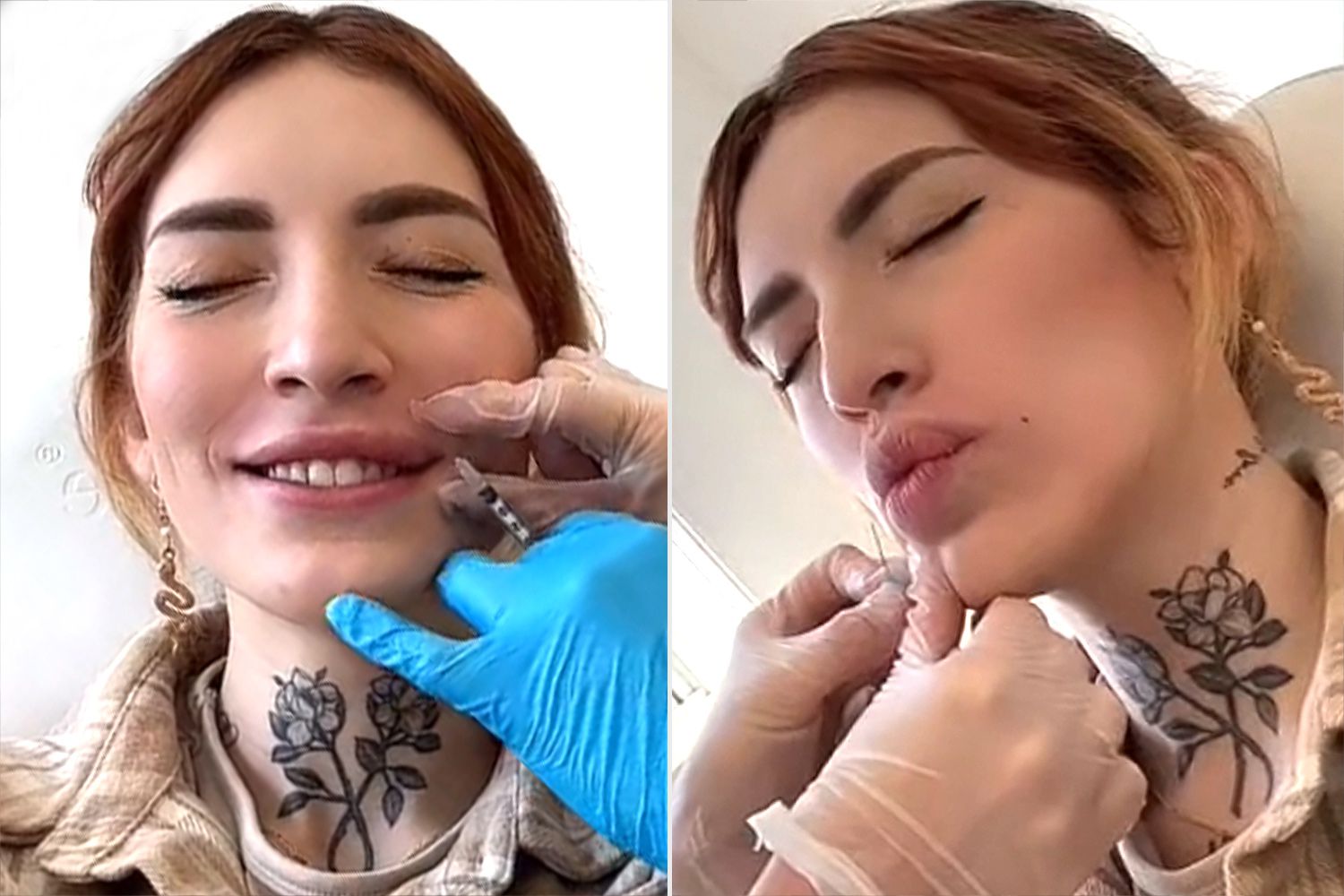
The query regarding the reversibility or removal of Botulinum Toxin, commonly marketed as Botox, touches on a pivotal distinction within the field of cosmetic injectables. Unlike dermal fillers based on hyaluronic acid, which can be dissolved almost instantaneously with the enzyme hyaluronidase, the biological mechanism of neuromodulators like Botox introduces a significant and inherent time constraint. This reality often runs counter to patient expectations, which are conditioned by the perceived speed and control of modern cosmetic procedures. Understanding the inability to simply ‘remove’ or ‘reverse’ the substance is less about a failure of medical technology and more about appreciating the molecular biology of the toxin and its interaction with the neuromuscular junction. The core of the issue lies in the toxin’s mode of action: it’s not merely a physical substance sitting beneath the skin that can be broken down or suctioned out; it is a molecular agent that has executed a specific, targeted interruption of communication between a nerve and a muscle. This makes the resolution of unwanted results a matter of organic decay and regeneration, a timeline dictated by the body itself.
…it is a molecular agent that has executed a specific, targeted interruption of communication between a nerve and a muscle.
The Molecular Lock and Key: Why Instant Reversal is a Biological Impossibility
The crucial reason why Botox cannot be immediately reversed stems from its precise molecular action. Botulinum Toxin Type A works by targeting the Soluble N-ethylmaleimide-sensitive factor Attachment protein Receptor (SNARE) complex within the nerve terminal. Specifically, the toxin cleaves a protein called SNAP-25, which is an essential component of the cellular machinery required to release the neurotransmitter acetylcholine into the synaptic cleft. Acetylcholine is the signal molecule that tells the muscle to contract. By destroying SNAP-25, the toxin effectively jams the nerve’s signaling apparatus, creating a “chemical denervation.” Once the toxin has bound and entered the nerve cell—a process that happens rapidly following injection—it becomes integral to the intracellular structure. There is no known injectable substance or external treatment that can safely enter the nerve terminal and reverse this cleavage of the SNAP-25 protein without causing damage to the nerve cell itself. The effect will only fade when the body’s own cellular processes gradually metabolize the toxin and, critically, synthesize new SNARE complex proteins, allowing the nerve terminal to sprout new connections and resume signaling.
…The effect will only fade when the body’s own cellular processes gradually metabolize the toxin and, critically, synthesize new SNARE complex proteins…
The Standard Duration: An Internal Biological Clock
The temporary nature of Botox is what makes it a manageable cosmetic procedure, even without an immediate reversal agent. The effects are not permanent because the body is constantly working to restore normal function. For most patients, the muscle-relaxing effects begin to noticeably wane after approximately three to four months. The specific duration, however, is not a fixed number and is highly individualized, functioning like an internal biological clock unique to each patient. Factors that influence this timeline include the area of injection—muscles with higher activity or smaller mass, such as those around the mouth (lip flip), often see a quicker return to function, sometimes in as little as eight weeks—the total unit dosage administered, and, perhaps most variably, the individual’s metabolic rate. A person with a faster metabolism may clear the toxin and regenerate nerve endings more quickly than average, leading to a shorter duration of effect.
…The specific duration, however, is not a fixed number and is highly individualized, functioning like an internal biological clock unique to each patient.
Managing the Undesirable Outcome: Strategies Beyond Direct Removal
While true reversal remains out of reach, addressing an unsatisfactory or unwanted outcome is not entirely without recourse. The management strategy pivots on balancing the asymmetry or compensating for an over-paralyzed area. If, for instance, a patient develops a “Spock brow”—an undesirable effect where only the central forehead relaxes, causing the lateral brow to pull up excessively—a skilled practitioner can strategically inject a few additional units of the toxin to relax the overactive lateral muscle fibers, thereby achieving a more level brow. Similarly, minor asymmetries, which can result from slight differences in muscle strength or injection placement, are often corrected by a touch-up treatment a week or two post-initial injection. These interventions are correctional and balancing, not true reversals, as they introduce more toxin to refine the effect, rather than taking the existing toxin away.
…These interventions are correctional and balancing, not true reversals, as they introduce more toxin to refine the effect, rather than taking the existing toxin away.
The Myth of the Dissolving Agent: Distinguishing Toxin from Filler
A significant source of confusion for patients is the conflation of Botulinum Toxin with hyaluronic acid (HA) dermal fillers. The ease with which HA fillers can be dissolved with hyaluronidase leads to the mistaken belief that a similar enzyme exists for Botox. This is entirely false. Hyaluronidase is a naturally occurring enzyme that breaks down hyaluronic acid molecules; it has absolutely no effect on the Botulinum Toxin protein complex. Injecting hyaluronidase into an area treated with Botox will not alter the toxin’s effect or speed up its breakdown. Practitioners must diligently educate patients on this fundamental difference, ensuring that the patient understands that the temporary nature of the treatment is the inherent safeguard, not an optional chemical antidote.
…Hyaluronidase is a naturally occurring enzyme that breaks down hyaluronic acid molecules; it has absolutely no effect on the Botulinum Toxin protein complex.
Potential Accelerants: The Limits of Hastening Metabolism
Given the forced reliance on the body’s natural metabolic processes, patients frequently look for methods to hasten the toxin’s breakdown. While no scientifically rigorous study has identified a reliable, significant accelerator, some anecdotal and minor clinical evidence points toward factors that might marginally speed up the process. These methods revolve around increasing localized blood flow and systemic metabolic activity. Strenuous cardiovascular exercise, intense heat exposure (like saunas or hot yoga), and vigorous massage of the treated area are all speculated to increase the local rate of blood circulation, which could theoretically aid the breakdown and clearance of the toxin. Furthermore, some preliminary research has explored the role of zinc supplementation, as zinc is a cofactor for the metalloproteinases involved in the toxin’s mechanism of action, though any noticeable clinical acceleration from this approach is highly debatable and should not be relied upon as a primary solution.
…These methods revolve around increasing localized blood flow and systemic metabolic activity.
The Importance of Patience: The Best Course of Action for Over-Correction
For a result deemed “over-corrected,” such as a “frozen” appearance with little to no expression, the most challenging and yet most medically sound advice is often patience. When over-paralysis occurs, the muscle simply needs time to gradually regain its function as the nerve terminals recover. Any attempt to aggressively massage or use heat to accelerate the process carries the risk of causing the toxin to migrate, potentially exacerbating the problem by affecting adjacent, unintended muscles. The injector may prescribe specific eye drops, such as those containing a mild alpha-adrenergic agonist, in the rare case of eyelid ptosis (drooping), but this only stimulates an accessory eyelid muscle to lift the lid temporarily; it does not reverse the paralysis of the primary muscle.
…The most challenging and yet most medically sound advice is often patience.
Preventative Measures: The Crucial Role of Conservative Dosing
The best strategy for avoiding the dilemma of an unwanted, irreversible result lies in prevention through conservative dosing and meticulous injection technique. Experienced practitioners often adopt a “less is more” approach, particularly for new patients, choosing to under-treat slightly in the initial session. It is always safer and simpler to add a few units in a follow-up appointment two weeks later than it is to wait months for an over-correction to fade. A thorough understanding of facial anatomy and the nuanced strength of a patient’s unique muscle movements is essential for this preventative approach.
…It is always safer and simpler to add a few units in a follow-up appointment two weeks later than it is to wait months for an over-correction to fade.
The Difference in Neuromodulator Brands: Same Reversal Principle
It is also important to note that the impossibility of immediate reversal applies universally to all commercially available Botulinum Toxin Type A products, including Botox, Dysport, Xeomin, and Jeuveau. Although these brands have minor differences in their molecular structure and diffusion characteristics, their core mechanism—cleaving the SNAP-25 protein to block acetylcholine release—remains identical. Consequently, the resolution of their effect, whether positive or negative, is governed by the same biological timeline of nerve terminal regeneration.
…the resolution of their effect, whether positive or negative, is governed by the same biological timeline of nerve terminal regeneration.
The Ultimate Reversal: The Body’s Regenerative Capacity
Ultimately, the body’s innate regenerative capacity acts as the definitive, though slow, reversal mechanism. The temporary paralysis initiated by the toxin is a controlled, finite event, a cellular phenomenon that the body is programmed to fix. It is this knowledge—that the effects are absolutely transient and will inevitably disappear—that provides the ultimate reassurance to patients who are dissatisfied with their results.
The toxin’s molecular grip on the nerve terminal dictates a four-month wait, making patient education and conservative dosing the only immediate controls.
